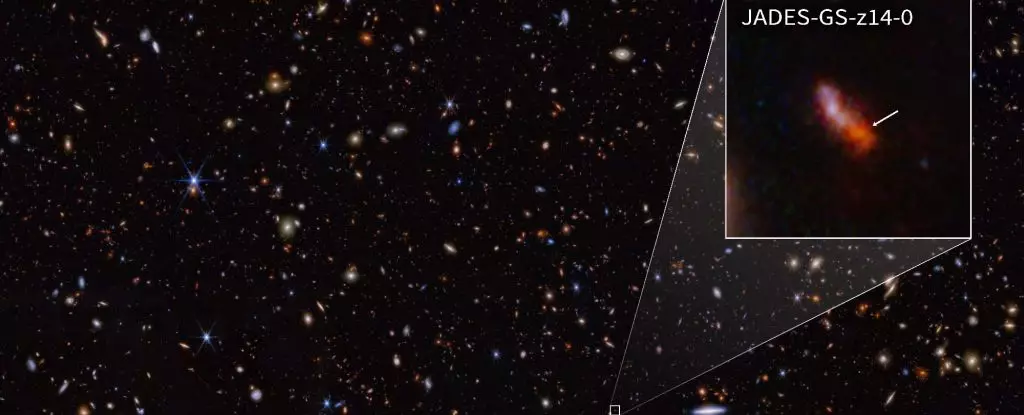A groundbreaking discovery has shaken the foundations of our current understanding of galaxy formation. Named JADES-GS-z14-0, this galaxy has shattered records as the earliest seen galaxy yet, appearing less than 300 million years after the Big Bang. Its brightness in the early Universe has left astronomers perplexed, prompting a reevaluation of existing models of galaxy evolution.
Researchers Stefano Carniani and Kevin Hainline were astounded when NIRSpec observed JADES-GS-z14-0 for nearly ten hours, revealing a redshift of 14.32. This confirmation not only surpassed previous records but also raised fundamental questions about how such a massive and luminous galaxy could have formed in such a short timespan. With a size exceeding 1,600 light-years across, the galaxy’s intense starlight indicates a staggering mass, challenging our assumptions about early cosmic evolution.
The discovery of JADES-GS-z14-0 marks a significant milestone in our quest to comprehend the origins of the Universe. Three separate papers have been written on this subject, each arriving at the same conclusion: this galaxy offers a new perspective on how galaxies emerged during the Cosmic Dawn. The period following the Big Bang has long eluded precise investigation due to a fog of neutral hydrogen that obscured our view. By studying galaxies like JADES-GS-z14-0, we can begin to unravel the mysteries of this obscured epoch.
Advanced instruments like the James Webb Space Telescope (JWST) have revolutionized our ability to explore the early Universe. Conducting the JWST Advanced Deep Extragalactic Survey (JADES), astronomers have discovered objects dating back to the first 650 million years after the Big Bang. The infrared capabilities of the JWST have provided unprecedented clarity, allowing us to peer through the cosmic fog and observe galaxies like never before.
The unexpected features of JADES-GS-z14-0 challenge conventional theories of galaxy formation. Its size suggests that starlight, rather than radiation from supermassive black holes, dominates its luminosity. The presence of heavy elements like dust and oxygen implies the existence of multiple generations of massive stars that have lived and died within a remarkably short timeframe. This revelation forces astronomers to reconsider the mechanisms driving galaxy growth in the early Universe.
As JADES-GS-z14-0 emerges as a groundbreaking discovery, it serves as a beacon illuminating the complexities of the Cosmic Dawn. The formation of large, bright galaxies in the early Universe defies previous expectations, pointing towards a new paradigm in our understanding of cosmic evolution. The archetype set by this record-breaking galaxy challenges us to rethink the fundamental processes that shaped the Universe in its infancy.


Leave a Reply